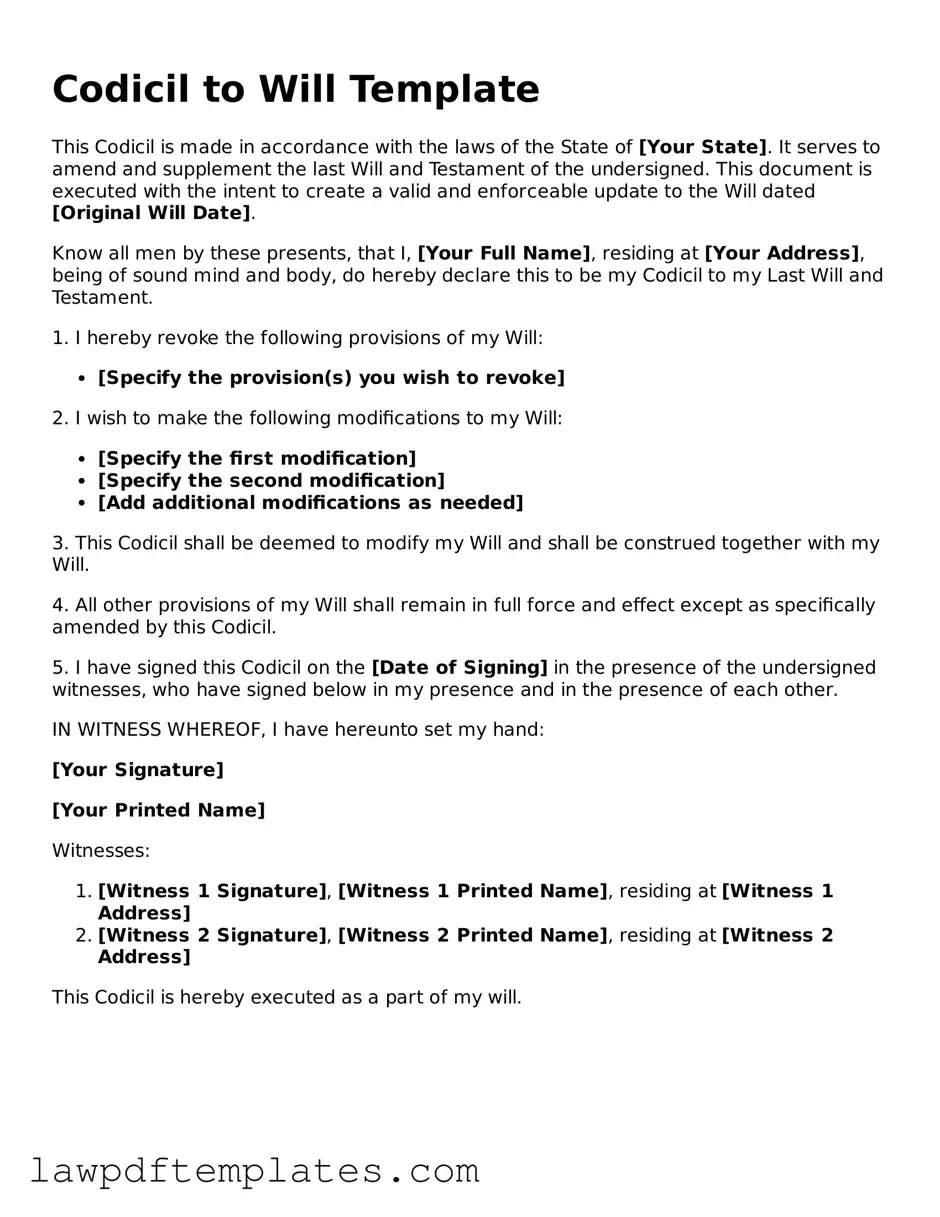When individuals decide to amend their wills, they often turn to a codicil as a straightforward solution. However, mistakes can easily occur during this process, leading to potential complications down the line. Understanding these common errors is essential for ensuring that your wishes are clearly communicated and legally binding.
One frequent mistake is failing to properly identify the original will. It is crucial to reference the original document by its date and any pertinent details. Without this information, confusion may arise about which will is being amended, potentially invalidating the codicil.
Another common error is neglecting to sign the codicil. Just like a will, a codicil must be signed by the testator to be valid. If this step is overlooked, the changes you intended to make may not hold up in court.
People often forget to have witnesses sign the codicil. In many states, having witnesses is a requirement for the codicil to be legally recognized. Not adhering to this requirement can render the document ineffective, causing your wishes to go unfulfilled.
Some individuals mistakenly believe that a codicil can be used to make significant changes to a will. However, a codicil is intended for minor amendments. If the changes are extensive, it may be more appropriate to create an entirely new will to avoid ambiguity.
Inadequate clarity in the language used is another pitfall. Ambiguous wording can lead to misinterpretation of your intentions. It is vital to be as clear and specific as possible to ensure that your wishes are accurately reflected.
Overlooking the need for a date on the codicil can also create issues. A dated codicil helps establish the timeline of your wishes and can be crucial in the event of disputes. Without a date, it may be challenging to determine the order of documents.
Failing to store the codicil with the original will is a mistake that can complicate matters. If the codicil is misplaced, heirs may not be aware of your updated wishes. It is essential to keep all related documents together in a secure location.
Lastly, some individuals do not consult with an attorney when creating a codicil. While it may seem straightforward, legal guidance can help ensure that all requirements are met and that your intentions are clearly articulated. Seeking professional assistance can prevent costly mistakes in the future.
In summary, filling out a Codicil to Will form requires careful attention to detail. Avoiding these common mistakes can help ensure that your wishes are honored and respected after your passing.
